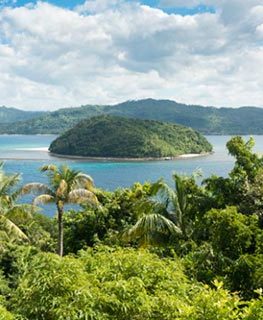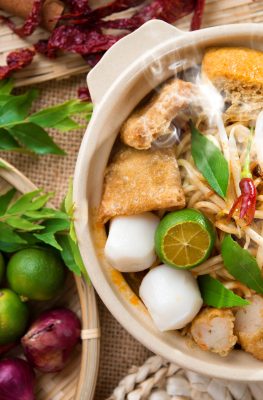Published on December 18, 2013
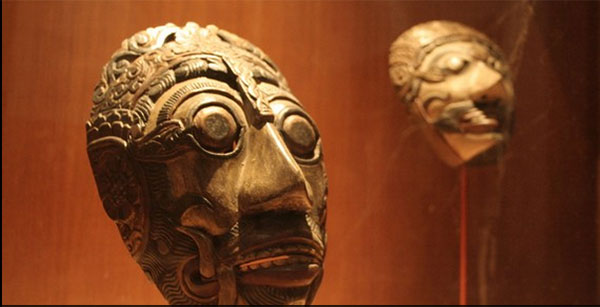
National museums offer travelers a great way to understand in broad stokes the history and culture of a nation and especially how that nation tells its own story and views its place in the universe. Southeast Asian nations are immensely proud of their histories and their national museums are well worth a visit.
The Brunei Museum
Brunei Darussalam’s national museum, The Brunei Museum, has sat on a bluff overlooking Sungai Brunei since 1972. It is 4.5km east of central Bandar Seri Begawan along the coastal road. The Brunei Traditional Culture Gallery spotlights Brunei’s role in Southeast Asia’s history, culture, and commerce and has a section on Western trade and intervention in Brunei, starting with the arrival of the Spanish and Portuguese in the 1500s. There are life-sized depictions of Malay rituals and a collection of Brunei’s famous ceremonial cannons, known as bedil, some with barrels shaped like dragon heads. The Natural History Gallery introduces visitors to Borneo’s extraordinary biodiversity via stuffed animals. The Islamic Art Gallery is the best-kept section of the museum. It houses the oldest pieces, including ceramics from Iran and Central Asia and blown glass from Egypt and the Levant dating from the 9th and 10th centuries. Other religious highlights include illuminated manuscripts of the Koran and tiny Korans the size of matchboxes. Source: Lonely Planet.
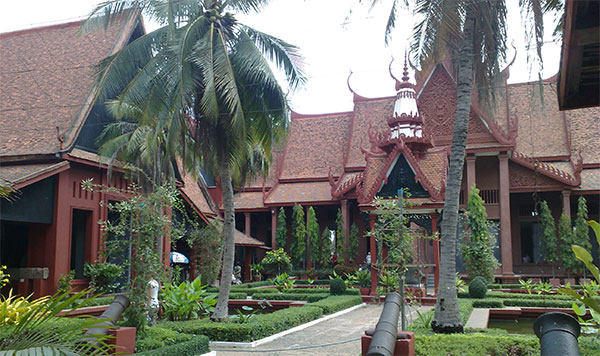
National Museum of Cambodia
The National Museum of Cambodia (Sala Rachana) in Phnom Penh is Cambodia’s largest museum of cultural history and is the country’s leading historical and archaeological museum. The museum houses one of the world’s largest collections of Khmer art, including sculpture, ceramics, bronzes, and ethnographic objects. The museum’s collection includes over 14,000 items, from prehistoric times to periods before, during, and after the Khmer Empire, which at its height stretched from Thailand, across present-day Cambodia, to southern Viet Nam. Located on Street 13 in central Phnom Penh, the National Museum of Cambodia is just to the north of the Royal Palace, to the west of Veal Preah Man square and to the east of the Royal University of Fine Arts, making it an accessible and unavoidable attraction for travelers interested in Cambodian history, culture, art, and architecture. Constructed between 1917 and 1924 and renovated in 1968, the Museum’s buildings were inspired by Khmer temples. Source: Wikipedia.
National Museum of Indonesia
Located on Medan Merdeka Barat, the National Museum is the pride of Jakarta, providing visitors an insight into Indonesia’s long history in cultural heritage from prehistoric days until present. Having recently been expanded, the museum houses an impressive collection of no less than 109,342 objects. The museum houses statues and stone inscriptions dating from the first century AD discovered on sites throughout the archipelago and a complete collection of batik cloths and woven textiles produced throughout the islands. A collection of gold and silver ornaments and jewelry once owned by the rajahs and sultans of the archipelago can be found on the top floor. The museum was initiated in 1778 by the Batavia Society for Arts and Science, a private organization whose aim was to promote research in the arts and sciences, but it was not officially opened to the public until 1868 when it came to be popularly referred to as Gedung Gajah (the House of the Elephant) or Gedung Arca (The House of Statues). In 1979 it was officially named the Museum Nasional (National Museum). Source (including picture at top of story): Wonderful Indonesia.
Lao National Museum
A visit to the Lao National Museum, also known as the Lao National History Museum, is an excellent way to learn about the history, culture and people of Laos while spending a couple of hours out of the sun. Many of the exhibits are faded and the old French Governor’s mansion (built in 1925) that the museum occupies has seen better days, but the museum covers a lot of ground, from prehistoric times to the modern day. There are some fascinating exhibits. The ground floor houses a mixture of ancient items such as dinosaur bones, pottery shards, and Khmer sculptures that sketch the early history of the region. Upstairs, you will find more detail in the depictions of the turbulent modern history of Laos, from the Siamese invasions and French colonial period, to the American military presence and through to the present day. There is a heavy emphasis on the struggle for independence and the introduction of communism in 1975. Find the museum in the centre of town on Thanon Samsenthai near the Tennis Club and the National Stadium. Source: Visit Mekong.
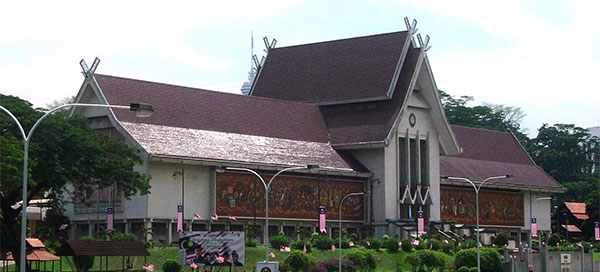
National Museum of Malaysia
Housed in a building with a distinctive Minangkabau-style roof and decorated with two beautiful Italian mosaic glass murals depicting Malaysian life, the National Museum of Malaysia (pictured above) is one of the Kuala Lumpur’s best attractions. A major renovation has resulted in four main galleries with well-organised displays: Early History, where you’ll find the bones of Perak Man; Malay Kingdoms, including the history of the Melaka; Colonial Era, from the Portuguese through to the Japanese occupation; and Malaysia Today, which charts the country’s post-WWII development. There are more things to see, including regularly-changing temporary exhibitions and a couple of small free galleries: the Orang Asli Craft Museum and Malay World Ethnology Museum, which has good displays of batik and other fabrics. Time your visit to coincide with one of the free tours given by enthusiastic volunteer guides. Although the museum is very close to KL Sentral station, it’s surrounded by a snarl of highways – the easiest way to get here is by taxi, the hop-on-hop-off bus, or via the walkway over the highway south of the Lake Gardens. Source: Lonely Planet.
National Museum of Myanmar
Located on Pyay Road, Yangon, the National Museum of Myanmar is the premier museum for art, history and culture in Myanmar. Founded in 1952, the five-storey museum has an extensive collection of ancient artifacts, ornaments, works of art, inscriptions, and historic memorabilia, related to the history, culture and civilization of the people of Myanmar. The museum’s collections are displayed in 14 galleries or halls. The Burmese Epigraphy and Calligraphy Hall, for example, contains exhibits on the origins and development of Burmese script. The Halls of Arts covers the progress of Burmese art, beginning with cave paintings from the Stone Age all the way through to 20th century contemporary art. The Hall of Ethnic Culture showcases the national dress and traditional artifacts of Myanmar’s various ethnic groups. The fossilized remains of a 40 million year old an anthropoid primate found in the Pondaung region in Upper Myanmar is on display in the hall dedicated to natural history. Source: Wikipedia.
National Museum of the Philippines
The National Museum of the Philippines is the repository and guardian of the Philippines’ natural and cultural heritage. As one of the country’s leading cultural agencies, it is tasked to achieve the goals of instilling cultural consciousness and a sense of pride and nationalism among Filipino citizens through its activities covering the sciences, education and culture. Established in 1901 as an ethnography and natural history museum, the National Museum has since broadened its concerns in the arts and sciences. Today it occupies the former Senate of the Philippines building where the arts, natural sciences and other support divisions are housed and the adjacent former Finance building, where the National Museum of the Filipino People houses anthropology and archaeology divisions. Source: Phil Museum.
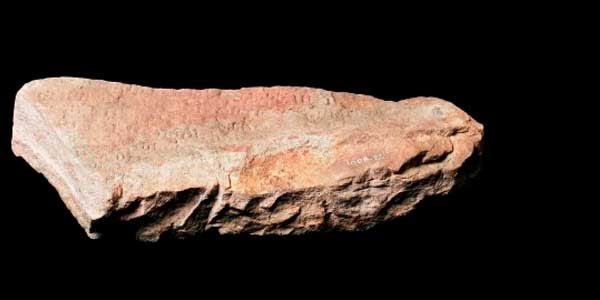
National Museum of Singapore
With a history dating back to 1887, the National Museum of Singapore is the nation’s oldest museum. It is the custodian of 10 National Treasures including the Singapore Stone (pictured), the earliest inscription found in Singapore. The Singapore History and Living Galleries adopt cutting-edge and varied ways of presenting history and culture to redefine conventional museum experience. A cultural and architectural landmark in Singapore, the museum hosts innovative festivals and events all year round – the dynamic Night Festival, visually arresting art installations, as well as amazing performances and film screenings – in addition to presenting thought-provoking exhibitions involving critically important collections of artifacts. The programming is supported by a wide range of facilities and services including F&B, retail and a Resource Centre. Source: National Museum of Singapore.
National Museum of Thailand
A visit to Thailand’s National Museum lets you explore an intensive history of the Kingdom. The museum houses a vast and impressive collection sourced from throughout Thailand and divided into periods of time: from pre-historic eras to old kingdoms (Srivijaya, Dvaravati, Khmer Kingdoms, Sukhothai, Ayutthaya) and the current Rattanakosin era. Fascinating treasures to be found include King Ramakamhaeng’s inscribed stone pillar, the oldest record of Thai writing, and King Taksin’s Throne. The museum was founded in 1887 by King Rama V, who ordered the move of ancient artifacts and antiques stored in The Grand Palace to the former palace of crown princes. Guided tours are given free by volunteers in English and French starting at 9.30 a.m. on Wednesdays and Thursdays. Tours are also given in German on Thursdays and in Japanese on Wednesdays of the first & the third week of each month. Guided tours in other languages can be arranged. Source: Tourism Thailand.
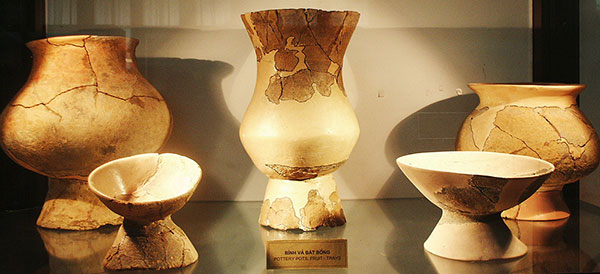
Vietnam National Museum of History
The Vietnam National Museum of History was early founded on the material basis of the Louis Finot, a museum of the Ecole Française d’Extreme-Orient which was built in 1926 and completed in 1932. On 3 September 1958, the Vietnam National Museum of History was officially opened for visitors. With an exhibition area of over 2,200 square meters, the museum walks visitors through prehistoric artifacts and carvings to funerary jars and some very fine examples of Dong Son drums from the north, excavations of Han tombs, Buddhist statuary, and everyday items of early history. The Museum regularly organizes topical exhibitions and equips a system of modern screens and displays to provide vivid images and exact scientific data. Source: B?o tàng L?ch S? Qu?c Gia.




